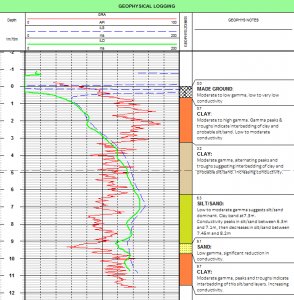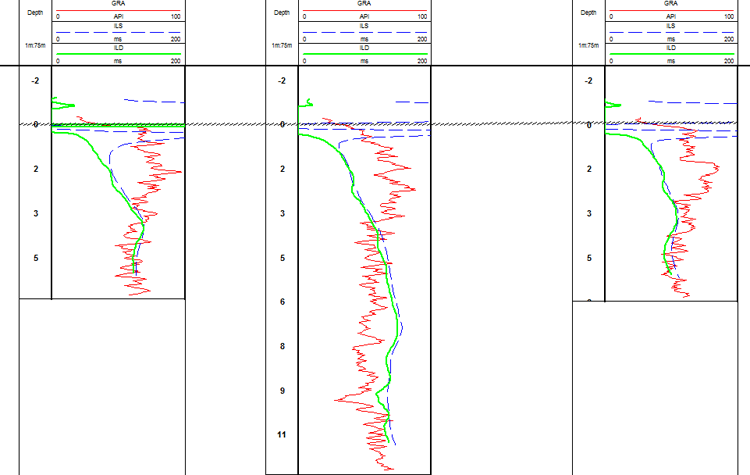 This is a hot topic in Adelaide at the moment where several polluted sites in and around Clovelly Park are under investigation.
This is a hot topic in Adelaide at the moment where several polluted sites in and around Clovelly Park are under investigation.
Most are associated with previous heavy manufacturing industries which have since moved on.
However, the pollution plume is now affecting surrounding residential areas.
Identifying and mapping the geology of Clovelly Park
Our gamma probe is a powerful method for rapid identification of the local geology.
Once the data from several boreholes has been recorded, we can start tapping this powerful method for mapping the geology across the suburb.
We favour this approach because it is not unusual for near surface sediments to be a mix of recently deposited thin sands and clays.
The sand layers are likely to be the “transport” zones through which the pollutant has migrated throughout the suburb. Identifying these zones will aid any remediation plan.

Sampling the local groundwater
One of the geophysical logging methods involves a specialist fluid sampler which takes a sample of the fluid in the investigation borehole at any depth.
In the case of equipment we have at Borehole Wireline that would be a one litre sample taken during one logging run.
The benefits of this approach are:
- Precise depth control for the sampling
- Better sample handling at the surface
Identifying the pollutant plume
Common pollutants from heavy industries of the 20th century are generally hydrocarbon based.
As long as the pollutant impregnates a portion of the groundwater or rock, it can be measured effectively by borehole resistivity and/or induction/conductivity logging where the typical signature to look for is unexpectedly high resistivity.
Our team always favours use of the induction/conductivity probe because measurements can be obtained in air filled and/or fluid filled conditions and within PVC casing.
Repeating induction/conductivity logging over time can show progression of a pollutant plume through the ground as pollutant percentage will alter the resistivity of the groundwater/rock.
Alternatives to borehole geophysical logging
While it can be tempting to apply fluid sampling techniques using a small pump, this technique has little or no depth control. So the question would remain, where are your samples coming from?
Another approach is auger drilling, a common drilling method for environmental site monitoring. The technique can produce a continuous sample of the rock that’s been drilled through, but the sample is typically messy and gives only a “bulk” indication.
Compare this to gamma logging which clearly shows intricate interbedding of thin sands and clays hence showing the likely “transport” zones and their respective depth in the ground and thickness.
Finally, as with any logging program, geophysical logging will provide fast, reliable and repeatable results complimenting any site geological information. In fact, we’d argue that borehole geophysical logging would significantly increase the efficiency of any program employed to solve mysteries like the one facing Clovelly Park.
